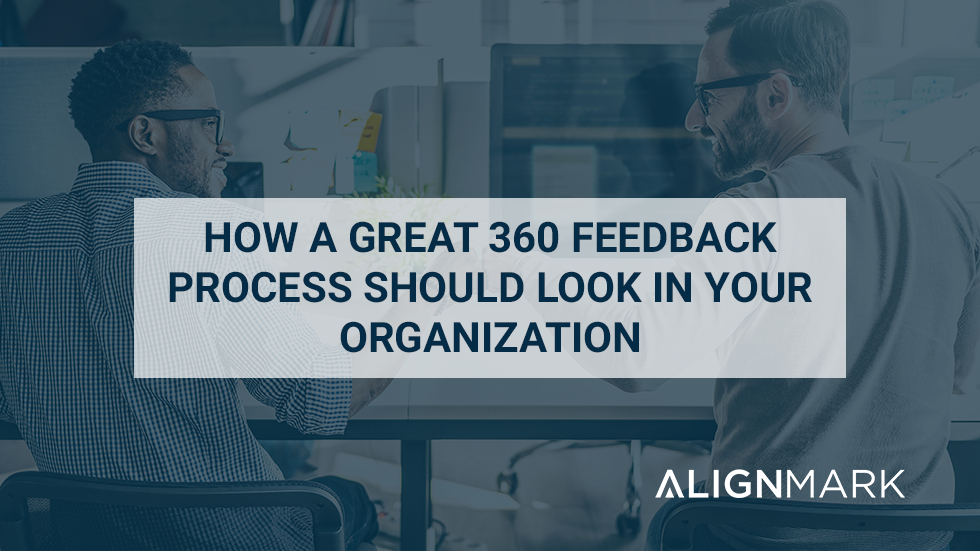Many organizations consider 360 Feedback processes but do not really understand the full scope of what they are, what it takes to implement, and how it will help their organization. To help ensure the success of this process it is important to have the correct tools and people involved to make this implementation seamless and most effective for the focal leaders that are participating. To accomplish these goals, it is important for an organization to have clear objectives to meet. Below we outline what an ideal 360 feedback process should look like from what objectives an organization should meet to the overview of the process. We also provide the rationale for why you should implement your 360 this way.
Common Objectives
- Improve the on-the-job performance of those in key sales leadership roles
- Provide one-on-one developmental experience for the leader which will enhance his/her leadership, coaching, and other key capabilities
- Make the process easy to implement by utilizing the 360-degree survey process as the foundation for understanding each leaders’ strengths and areas needing development.
360 Survey Process
This process utilizes a survey that is linked to the competencies identified for success as a leader within their organization. Each focal leader will rate themselves on a variety of behaviors and those ratings will be compared to the perceptions of other groups (i.e., their Manager, Peers, etc.). This information will provide the basis for creating an Individual Development Plan (IDP) for each focal leader. The 360 process has several advantages as a development tool including:
- Measuring discrete behaviors which provide participants with clarity and is valuable for developing performance.
- Since results are only reported in aggregate (except manager) therefore more anonymous leads to more candid evaluations.
- It provides information from diverse perspectives and a more well-rounded view of performance which carries more weight and therefore is more likely to lead to change.
- Because there is more acceptance by participants there may be more motivated to change.
Our Program Overview
Coaching is a tool to help accelerate one’s abilities, to be more successful, and to develop qualities that will assist with the individual’s career. The coach is committed to helping an individual grow, and a clear Individual Development Plan (IDP) is established. This plan should be clearly linked to the organization’s business strategies as well, through including others within the organization.
Coaching model
Execution Strategy
Coaching facilitates individual learning and development for leaders to increase the velocity at which business results are achieved. In all our coaching engagements, a collaborative partnership is created between the participant, the organization, and the coach. While each assignment is customized to meet the individual’s needs, most engagements include:
- Contracting between leader, manager, and the coach
- Use of valid assessments
- Creation of an Individual Development Plan (IDP)
- Share patterns and reports with the organization
- Bi-weekly or monthly coaching sessions
- Follow-up assessment to monitor progress
More specifically, AlignMark’s coaching model is implemented with each individual Leader in the following manner but provides flexibility to accommodate unique needs and preferences.
|
Pre-Process Diagnostics and set-up |
|
|
Engage & identify |
|
|
Explore
|
|
|
Plan |
|
|
Leader / Coach Monthly Interactions
|
|
|
Evaluation and Post-survey (Via Phone) |
|
Rationale
Research indicated between 25% and 40% of organizations now use coaches and found training alone delivered a 22% improvement in productivity, while training coupled with coaching delivered an 88% improvement. An extensive study found the average return on investment for executive coaching was over 500%.
Knowing the ideal way, a 360 process should work is important knowledge to have before implementing a 360 into your organization. By outlining how the process works and the rationale behind 360 Feedback processes we hope that this helps make the decision to implement a 360 process in your organization to jump-start the development of your leadership.
Related Blog Post: Who should facilitate 360 Feedback Sessions to Focal Leaders
Related Resource: 360 Feeback– Your Complete Guide


 Dr. Jaffee (M.A., Ph.D.) is a recognized expert in the field of assessments, and has created effective HR Solutions used by millions of people.
Dr. Jaffee (M.A., Ph.D.) is a recognized expert in the field of assessments, and has created effective HR Solutions used by millions of people.